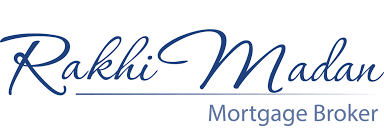Homeowners in Brampton, Toronto, and the GTA turn to Home Equity Loans when they have financial needs or seek financial flexibility, without the necessity of selling their home or refinancing their existing mortgage. Common reasons for choosing a home equity loan include paying off non-mortgage debts to improve cash flow and reduce interest costs, funding renovations, or covering significant expenses.
What is Home Equity?
Your home equity is determined by subtracting your current mortgage balance from the market value of your home. For example, if your home is valued at $900,000 and you owe $500,000, you have $400,000 in available home equity. The loan-to-value ratio in this example is 56%.
Your home will likely need an appraisal to determine its current market value, typically conducted by a qualified appraiser chosen by the lender.
Options for Home Equity Loans
Home equity loans encompass various financial products that use your home’s equity as collateral. These loans often provide larger sums and lower interest rates compared to unsecured loans. The two most common types of home equity loans are second mortgages and Home Equity Lines of Credit (HELOCs).
Second Mortgage
A home equity loan becomes a second mortgage when it assumes a secondary position after your primary mortgage. In the event of a sale or foreclosure, the primary mortgage is repaid first, followed by the secondary mortgage. The amount you can borrow depends on your home’s equity.
Second mortgages are advantageous when homeowners are reluctant to break their current mortgage and incur additional fees, especially if they have secured a low-rate mortgage they wish to retain. A second mortgage allows you to address financial challenges or leverage your equity without disrupting your existing mortgage.
Compared to unsecured loans, second mortgages often offer lower interest rates and larger loan amounts, making them a cost-effective borrowing option. However, a second mortgage will have a higher rate than your first mortgage.
One of the primary advantages of second mortgages is that individuals with less-than-perfect credit or low income may still qualify for a second mortgage, providing a means to secure much-needed funds. Typically, the combined total of your first and second mortgages cannot exceed 80% Loan-to-Value (LTV), although, in some cases, lenders may allow up to 85%.
HELOC – Home Equity Line of Credit
A HELOC offers greater flexibility compared to a second mortgage. Instead of receiving a lump sum, you can access funds as needed and decide when and how much to borrow, up to your predetermined limit. HELOCs are re-advanceable if you repay the borrowed amount. There are no prepayment penalties, allowing you to pay back the borrowed amount at any time.
It’s important to note that HELOCs typically require good credit and consistent, verifiable income, making them harder to qualify for than a second mortgage. A HELOC generally has variable interest rates that fluctuate based on market conditions, so your payments can change, and you are typically only required to pay monthly interest.
With a HELOC, you can borrow up to 65% of your loan-to-value, but the combined total of your HELOC and first mortgage cannot exceed 80%. If your first mortgage is fully paid off, you can apply for a stand-alone HELOC that is up to 65% of your home’s value.
Home Equity Loans from your Brampton Mortgage Broker, Rakhi Madan
If you’re a homeowner in Brampton, Toronto, or the GTA, and you’re considering leveraging your home equity, reach out to Rakhi Madan, your trusted Brampton Mortgage Broker. Rakhi will assess your situation, provide personalized guidance, and help you explore the best Home Equity Loan options to meet your specific financial goals and needs. Don’t hesitate to contact Rakhi Madan for expert advice and support if you have a financial need or are looking for financial flexibility.


